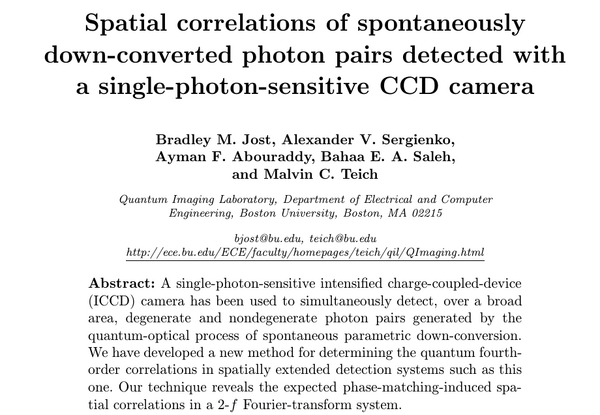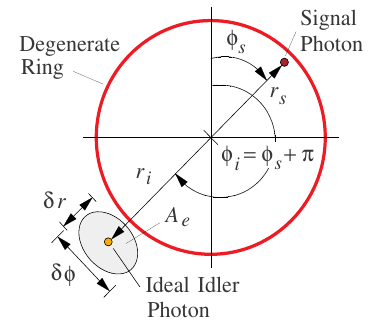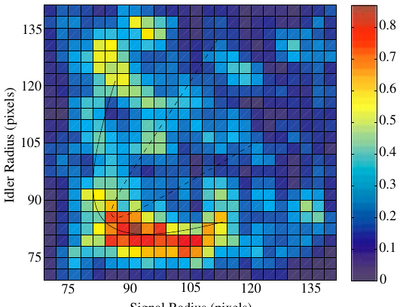Spatial correlations of spontaneously down-converted photon pairs detected with a single-photon-sensitive CCD camera. B. Jost, A. Sergienko, A. Abouraddy, B. Saleh and M. Teich in Opt. Express 3:81 (1998). What the paper says!?

This reports the observation of spatial-pairing correlations from SPDC bi-photons (both degenerate- and nondegenerate-SPDC photons) imaged on a single-photon-sensitive ICCD camera.
There is a time-to-space transposition:
Our results can be viewed as the spatial analog of the timing coincidence measurements that are found in the SPDC literature.
Two configurations are used, that correspond to near-field (they call it one-to-one and is an 4-f lense setup) and far-field (angle-to-position 2-f) imaging.
The near-field provided no correlations ()
The far-field produces an annulus, with correlations on opposite sides:

Much attention is given to factors that blur or spread the correlations. Even the successful (annulus) configuration, required such practical attention:
We initially attempted to use the idealized correlation analysis described above but failed to produce meaningful results primarily because of
two practical difficulties:
Interestingly, the measurement to a quantity that refers to the full structure provides one of the difficulties:
the center of the down-converted photon annulus is difficult to precisely identify (and is not very useful for full-ring analysis if the rings are distorted) and errors are introduced by the registration (mapping) of the rings in translating from a rectilinear (pixel) to a polar coordinate system
so it is better to use absolute measurements. A technique is presented to extract correlations from such annulus shapes on arrays of pixels (basically considering patches of pixels as opposed to single pixels).
The correlations are observed as follows:

It would have been nice to see the counterpart of this image at other (in particular, perpendicular) angles.
The image above include an estimated 10 to 100 bi-photon events.
The correlations are not striking, especially as they are not presented in a very compelling way, but this is a pioneering demonstration of spatial correlations, here, from the source itself.
They also point to Ref. [10] as the first observation of spatial correlations of SPDC.